Ugh, it’s been an awful week. Finally posting something. I just expanded this so at least I can post something. I have started on another major Game Opinion Summaries list, but that will take quite some time. I’ll try to keep semi-regular updates in the meantime.
—-
Table of Contents
—-
TI 99/4A Cartridge Software Summaries
A-Maze-Ing
Adventure
Alpiner
The Attack
Blackjack/Poker
Blasto
Car Wars
Chisholm Trail
Early Learning Fun
Hangman
Hopper
Hunt the Wumpus
Munchman
Music Maker
Tombstone City: 21st Century
Parsec
—-
System Overview
—-
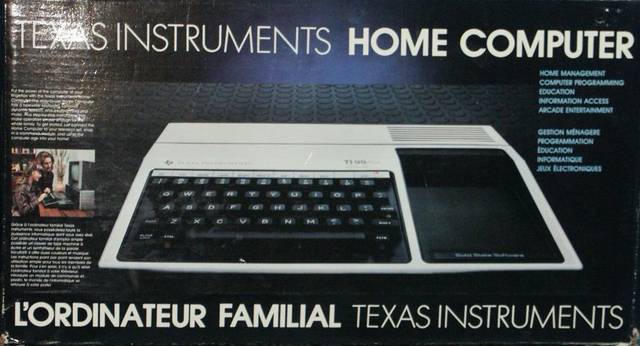
I got a new system last month, a TI 99/4A computer from the early ’80s. Actually, I got the computer unit itself several years ago, loose for $3 from Goodwill, but I didn’t have the cables to make it work, so it’s just been sitting in the basement. Well, I saw some TI 99/4A game carts locally recently, so I decided to get the stuff required to play the system; I’ve been wanting a new system recently without spending much, and this certainly does that! The base TI 99/4A is a cheap system, and I got a pretty good deal here on it too, that’s for sure. So far, I think that it’s okay, but not great. The computer is interesting, though. It’ll be better once I have a gamepad adapter so I don’t have to play games with the keyboard, too… :p Still haven’t gotten that yet. At least I can play games, even if the controls aren’t ideal. All of the games I have play on keyboard.
So, I got the system a while back, but to make it work, I bought a lot on Ebay last month for $22 including shipping that got me a power supply and RFU (both original; the brick is in the middle of the cord, not on the plug, which is great!), a game, and several replacement parts for the system that I don’t need now, but who knows, might someday. I also have the Speech Synthesizer Module, which I got locally as a part of a $10 pack of the speech unit and some games — yeah, it was a good deal! The Speech Synthesizer sells for a good $30 online, but I paid only $10 for that plus 12 carts, 9 of which are games. The system is a computer of course, so it has a bunch more accessories including a tape drive, floppy drive, etc., but for now I’m fine with just the base system. TI released most games on cartridges, anyway. The tapes and floppies are mostly for horrendously dated productivity software (both for the software and for saving data), and for text adventure games. I think there are a few non-text adventure games on tape or floppy, but most of the system’s small game library are on carts. The TI 99/4A only lasted from 1978 to 1983, and TI tried to limit third-party software releases through most of that time, so it has few games, or anything else. Some of what it has are interesting, though, as I said earlier. One reason for the paucity of software is that for most of this system’s life, TI strongly discouraged third-party software, unlike most computers; they wanted to publish everything themself. As a result, the system has a much smaller library than most computers of the time that lasted as long. Still, it has some good stuff for sure, games particularly. But facing tough competition, TI gave up on the industry and announced the system’s death in the second half of 1983, early in the crash, and discontinued it in early ’84; it was one of the oncoming crash’s first computer victims, taken out by the Commodore 64’s price war it seems, from what I’ve read.
The system itself is fairly well built. The system, power supply, RFU, speech synthesizer, and all 15 carts I have all worked perfectly on the first try! Very impressive, for stuff that probably has barely been touched in decades. The system is a bit beat up, and I really would like to have that joystick adapter (because the TI joysticks are apparently terrible, so I’d rather use the ones that let you use Atari/Sega [SMS/Genesis] controllers) because the keyboard, while nice and clicky, is NOT a good game control mechanism, but it works well, considering its age and where I got it! I was not expecting everything to work nearly so well… TI clearly had fairly good build quality. The system does have metal on it, and the cartridges have spring-loaded protectors over the board that goes into the system, so this does show. Maybe those protectors is why all of the games have worked first-try with no blowing or anything needed. The only issue I’ve had with the system so far is that sometimes some keyboard keys stop responding, but pressing around the keyboard fixes the problem, so it’s pretty minor. A joystick adapter would also get around this problem; I highly doubt I’ll ever do much non-gaming computing on this machine.
The RFU outputs via those two prongs that really old things have. I thought I’d need to buy a coax adapter, after testing it by taking apart my Odyssey 2’s RFU (which is the same, but came attached to a two-prong to coax adapter), but then I realized that the O2 RFU has side two-prong inputs, so instead I screwed the crazy-big TI99/4A RFU onto the side of it. Of course both are manual RFUs, but it works fine and my TV recognizes it, which is great. No problems like those I had with the Atari 7800. It’s weird to use a computer on a television, but I don’t have a setup where I could attach this to anything other than a TV, and don’t have a desk to do a proper computer setup for it, so it’ll have to do. I have to play it with the thing sitting on my lap, of course. It gets warm once it’s been on for a while, particularly on the righthand side of the system. It’d be nice to get joysticks, so I could just put it nearby (since menus and such require the keyboard). 🙂 Of course, if I ever get the floppy drive addons (either sidecars that plug into the side expansion port, or the large external expansion box which looks like a desktop computer), it’ll need to be on some kind of desk. They make the thing much larger. This will do for the basic system right now, though.
For games, all of the games below are cart only. I don’t have any boxes or manuals for anything. I will need to print some stuff out, because I REALLY need a listing of the system command codes — hitting several keyboard keys plus the number buttons does various commands, and I don’t know what they are because the command strips are missing. For those who know, I mean those paper or cardboard strips that you’d put above the numbers on the keyboard that show you what the hotkeys do; we had something like that for our first PC in the early ’90s, for Wordperfect. One other thing I’d like is an application, the expanded programming cart that lets you make Basic programs that play back speech samples from the speech synthesizer! It’d be nice to be able to do that, but the built-in TI Basic can’t do that, I think; it’s overly limited. The speech synthesizer is kind of cool, but all I can do with it right now is hear the speech in the two games I have that support it, Parsec and Alpiner.
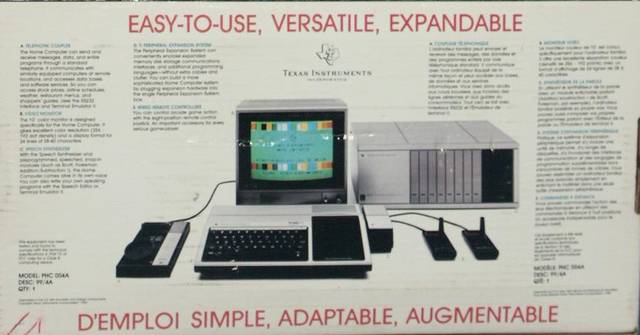
A full setup, shown on the back of the box. I just have the base system with the Speech Synthesizer module (the small box plugged into the side of the computer), so far.
I have 15 TI 99/4A cartridges. I will talk about each one below.
TI 99/4A Cartridge Software Summaries
The Attack – This is the game that came with the $22 power supply, RFU, and parts bundle from ebay. It’s got good music, but the gameplay is slow and kind of boring. This is one of several top-down shooting games on a sort of grid. You have to kill all the enemies to beat each level. Enemies come in two sizes, small or large. Small enemies can’t hurt you, but if four combine they become a large enemy the size of four normal ones. The field is full of black squares with numbers on them, which turn into enemies once those numbers, which are timers, reduce to zero. You win a level once all large enemies and black timer blocks are gone from the screen. As with most shooting games on this system, the game is sort of grid-based. A tap of a direction changes direction, and then another press in that direction moves forward in that direction. You can also shoot, of course, and those are the controls. The game starts out VERY easy, but does eventually get trickier, though I imagine the keyboard controls hold me back too; the keyboard works okay for a slow-paced game, but once the action heats up… yeah, it’s not great. Also, I wish the music played during gameplay, it’s good. Probably there’s a system limitation that made playing music during play difficult. Overall, this is one of the weaker shooting games I have. It’s too slow-paced and too easy for too long. Still, there is some fun to be had once you get a ways into the game.
Next I’ll list the 12 carts I got in that cheap $10 package locally, along with the Speech Synthesizer. Yes, all of this plus that accessory was $10. The first three aren’t games, but I’ll list them anyway for completion’s sake.
Adventure – This isn’t a game; it’s a boot disc for text adventures. The cart allows you to boot any of the first twelve of the text adventures for this system by a guy called Scott Adams, which are available on tape and probably also floppy disk. Without one of those accessories, though, this cartridge is useless. Too bad.
Early Learning Fun – This “game” is for very young children. Anyone old enough to read this is outside of its age-range. There’s nothing here remotely worth touching for anyone over, like, age six. TI released a whole bunch of learning “games” for children, and this is the one I have. It’s probably aimed at about the youngest audience you could get to use a computer. This super-simple, incredibly dated visuals have definite charm, though! The simple but oh-so-early-’80s visuals, and beeping sound effects, combine to make this pretty amusing to “play” for a few minutes as you look at the various modes. There’s nothing here beyond that, though. There is almost no actual challenge; as hard as this game gets are some parts where you have to determine whether there are more of one type of item, or another very obviously different item, on screen, when there are only like 4 or 6 items on screen total! It’s … not hard. But the title is “EARLY Learning Fun”, so that’s okay.
Music Maker – This is a music creation application. You can compose music for the system’s decent built-in music chip, and save it to tape or floppy. Even if I had those addons, I’d probably never use this. I’m hopeless at music.
Games from this package:
A-Maze-Ing – Now we get to some more actual games! A-Maze-Ing is a maze game, as the name suggests. Real mazes to get through, that is, not Pac-Man dot eating. You play as a mouse in a maze, and your goal is to navigate the maze to the end. The game has a nice variety of options, including three maze sizes from small to decent-sized, one or two player simultaneous play, the option to have a few cats in the maze that will kill you if you run into them (so try to avoid being cornered!), invisible maze options if you want to make the game harder (the walls appear if you run into one), easy or harder cat AI settings, and obstacles in the maze. Yeah, there’s a nice featureset here for the time. Of course your only goal is to reach the end, so you win the game each time you get there that’s game over and you can then play again with the same or different settings, but it’s decent fun for a few minutes. I’ve always kind of liked mazes. There’s a LOT more to do in this game than there is, say, in the Atari 2600 maze game, Maze Craze! It’s faster-paced and more fun than Snail Maze on the Sega Master System, too. The mazes aren’t as large as Snail Mazes’ mazes, but that’s a good thing overall. A-Maze-Ing is very simple and straightforward in what it tries to do, but what it does it does as well as could be hoped for for the time.
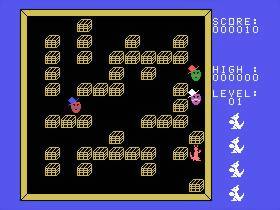
Hopper – This is a clone of Sega’s arcade game Pengo, with a few less features than arcade Pengo, but still pretty solid gameplay. You play as a kangaroo here, trying to escape from your human captors on a cargo ship. I don’t love Pengo, but this is a pretty good version of it. Pengo is a top-down action/puzzle game. You move around a screen full of boxes, trying to kill the three enemies on each level by pushing boxes at them. If you hit one with a box, they die. If they touch you, you lose a life. And that’s all there is to Hopper; some elements of Pengo, such as the enemies pushing/destroying blocks, don’t seem to be present here. It just gets harder mostly because of the increasing enemy speeds. Other than that, the main difference is graphical; Hopper is kangaroo-versus-humans, instead of Pengo’s penguin characters. Hopper is a decently fun little game, but I don’t know how long it’ll hold my interest. The game is mostly playable on the keyboard, though, which is nice… at the easier settings at least, that is. As usual, it’s tough to keep up once the speed increases. This game has no variety — just slide the boxes into the three enemies, and repeat until you lose — but it’s solidly done. This is apparently one of the later games for the system, from mid/late ’83, and it’s nice that I have it, it’s a solid and good game.
Alpiner (Speech Synthesizer supported) – Alpiner is a game based on the arcade game Crazy Climber, except with normal controls. In Crazy Climber, you have to use one stick to control one hand, and another for the other hand. It’s quite confusing. The Famicom (NES) version of Crazy Climber requires you to move one hand with controller one, and the other hand with controller two! Crazy. Alpiner’s controls are better — left, right, up, and down move you normally. That’s the only control here, there are no other buttons. This game has impressive graphics for the system, with very large sprites on screen. However, the gameplay is REALLY basic, too much so for me I think. You are a mountain climber, and are trying to get up six mountains. The mountains are named for some large real-life mountains, but in this game you’ll climb each one in seconds! Your sprite is HUGE, and obstacles are either large and very easily avoided, or are far too hard to see coming because you take up like a third of the screen’s width and height. The graphics are decently good, and the speech samples are amusing, but I don’t like the gameplay very much, it’s just too uneven between the excessively easy parts, and the obnoxiously difficult and random ones you run into about halfway through this very short game. Avoiding the falling rocks when you’re so large is a guessing game. This game could be worse, as it is playable, and occasionally amusing, but is kind of bad I think. The speech samples and graphics make it worth a try, though, it’s amusing stuff to see.
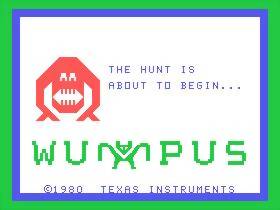
Hunt the Wumpus – Perhaps one of the better-known games for this computer, Hunt the Wumpus is a graphical remake of a text-based mainframe game. The game is a fantasy action-adventure puzzle game with three difficulty settings and a few other options as well. You are a hunter, with a single arrow, and have gone into the caves looking for the Wumpus, a fearsome monster. The game field is a single screen grid of round caves (rooms) and curving connecting passages. Orange circles in a room signify that the Wumpus is within two spaces of your location. If you run into the Wumpus, the Wumpus eats you of course. Green rooms have a pit next to them, so watch out. If you enter a room with a pit, you fall into the pit and die. Bats … not sure what those mean yet. Regarding the orange circles, only rooms count when counting to two, NOT curved connecting paths, so in the harder settings which have a lot of them this game gets QUITE tricky! You’ll need skill and luck to kill the Wumpus in the harder difficulties, because you never know for sure if a room or curving path is in front of you. Regardless, using these clues, you have to try to kill the Wumpus. You’ve got to guess where the Wumpus is, hope you don’t walk into it because that means death, and fire your arrow at the space where you think it is. If you’re right, you win. If you’re wrong, well, you had only one arrow and wasted it, so the Wumpus eats you. The game rules are simple, but once you get into it, this game is both challenging and pretty fun. The graphics are also simple, but have a great classic charm that has aged very well. The “you win” and “you die” animations are great as well, as is the menu music. On the easiest difficulty setting it is simple enough to kill the Wumpus, but try the harder modes and it’s a different story entirely! Unfortunately, as in some other games from the era, there is no progression here; just play single levels and see if you win or lose. The game does keep track of how many times you’ve won, gotten eaten by the Wumpus, or fell in a pit, though, which is nice. Of course it won’t save this; I don’t know if any cartridge games for this system support saving stuff to tape, but this one doesn’t. Still, it’s great to have a sense of how well you’ve been doing in your current session. Overall this is a good game, but it gets frustrating quickly on the harder settings — it’s just so hard to figure out once lots of curving paths have been added into the mix! This is a decent little game, but I can see it getting repetitive very quickly. Still, for such old game, it’s interesting — this was definitely trying new things, back when it released in about 1980! And it’s still fun for a little while, at least.
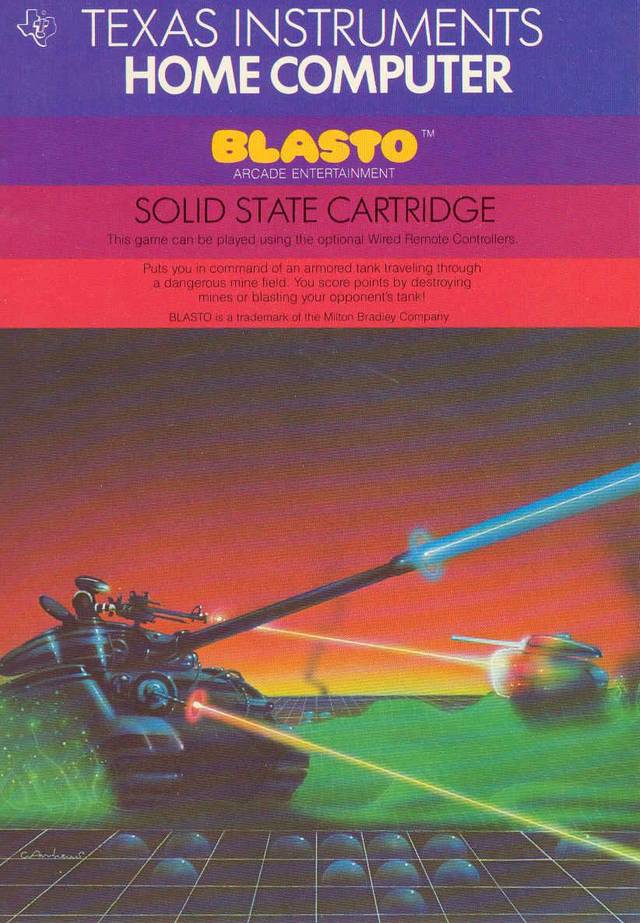
The game may not be great, but the box art looks pretty cool! Wish I had it.
Blasto – This is a puzzle/action game. You have to clear a field full of mines, using a tank. The game has several modes and options, including one or two player simultaneous play and three screen bomb densities, Few, Average, or Many. The game has a strict time limit as well. This is a very short, but tough, game! At anything above Few bombs, destroying all of them in time is hard, and I haven’t managed it yet. This game feels a bit like Combat but with mines. Squares on the field are either empty, normal blocks, or bombs. You can shoot in four directions, as always for the shooting games on this system. When you shoot a normal block it breaks, but if you shoot a bomb it explodes, destroying the eight spaces around it. So, destroying a mine will set off a chain that destroys all the mines around it. Try to think of the best path around the level so you get the mines as quickly as possible. This game is a bit too simplistic, though. Clearing the minefield is frustrating, and if you manage it that’s it; there is only one screen. That’s not enough, really. There is no AI opponent, unfortunately, but there is a decent two player versus mode, where you try to score the most points by shooting the other guy and clearing mines. It’s a nice feature. I’d REALLY want joysticks for this to work better, though, sharing a small keyboard is no fun. Overall, as a single player game Blasto isn’t that good, but the multiplayer is more interesting. It’s still an average at best game, though.
Blackjack/Poker – I haven’t played this beyond testing it to make sure it works, but I’ll probably play Blackjack sometime. I don’t like casino games generally, but blackjack is tolerable. This version is pretty basic, with single or multiplayer versions of both games. The graphics are bland.
Hangman – This is the only typing game I have (beyond Early Learning Fun), and it’s kind of entertaining! It’s too bad that this game doesn’t support the Speech Synthesizer, for a graphical version of the hangman game in TI’s Speak and Spell, but otherwise it’s decent stuff. On the note of the Speak & Spell, yes, I had one of those growing up! Great things. Hangman is okay as it is, though. You can either use the games’ built-in dictionary, or type words in yourself. You’ve got to choose the number of letters of each word you’ll be challenged with, from 4 to 9, before playing. You have 11 guesses to try to guess the word. With each miss, a piece of the scaffold and hanging guy is added. Of course, once you’ve missed 11 times, the hangman has fully been drawn in, Taps plays, and you’re dead. Try again. A bit grim for a kids game… but it does make you want to try again and get the word right next time! Anyway, overall, Hangman is an okay game. It’s basic, but okay. The simple graphics have some serious charm.
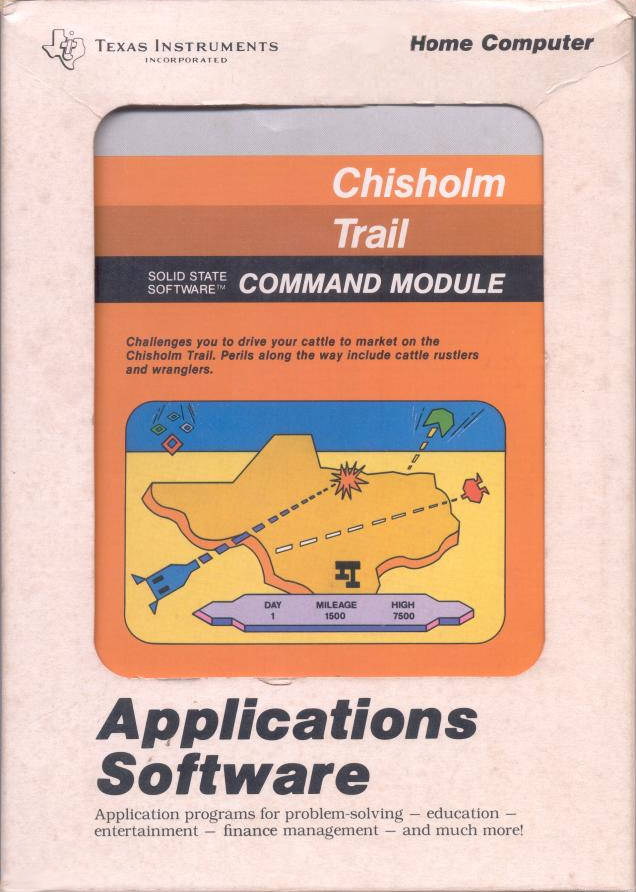
Note the difference between the descriptive text and the sprite art. The sprites show what the game is actually like. The text… uh, that has little to do with the actual game. :lol
Chisholm Trail – This is another top-down grid shooting game. It sounds like a Wild West game, but looks like a shooter. Move around the grid, and destroy the enemies! The game has 9 difficulty options (starting points), but in any setting the game is HARD right from the start, and it’s fast-paced too — none of that slow stuff like The Attack or Tombstone City. I want a joystick for this one. The game seems pretty good, though. In the game, there are four colored enemies who shoot at you and spawn endlessly when killed, and black block enemies which are your actual targets and won’t attack you back. The colored enemies have different sprites as you progress, but the black ones always look the same. The black block enemies start from a ring in the center, so you can see how many are left. In order to complete each day, you need to destroy all 16 black block enemies on each stage. Making things worse, you have limited ammo, so the more you shoot at the colored guys, the more likely you’ll run out of ammo and have to lose a life, if you don’t lose them even before that first. There’s one last obstacle — when you kill a colored enemy, its starting-point entrance will shoot a laser blast at you if you’re lined up with it, so stay away from them and focus on the moving black blocks. Chisholm Trail is a grid-based game of course, but everything on this system seems to be, so that’s not exactly surprising. You do have free movement, but it’s all on a grid. Tap an arrow key to change direction, tap again in that direction to move a space. The Attack works the same way, and Tombstone City as well. This seems promising and could be a good game, but I can’t say for sure yet, need better controller. The game is fun, but I die so quickly! I haven’t managed to finish a level of this yet, sadly enough. The enemies are tough to avoid and move quickly, and shoot at you as well. The music theme is nice, but as with most games on this system, there’s no music ingame, only sound effects. Very few TI 99/4A games have in-game music, apparently… oh well. Overall Chisholm Trail is a decently fun game, but it’s very difficult. This might be the hardest of the TI 99/4A games that I have.
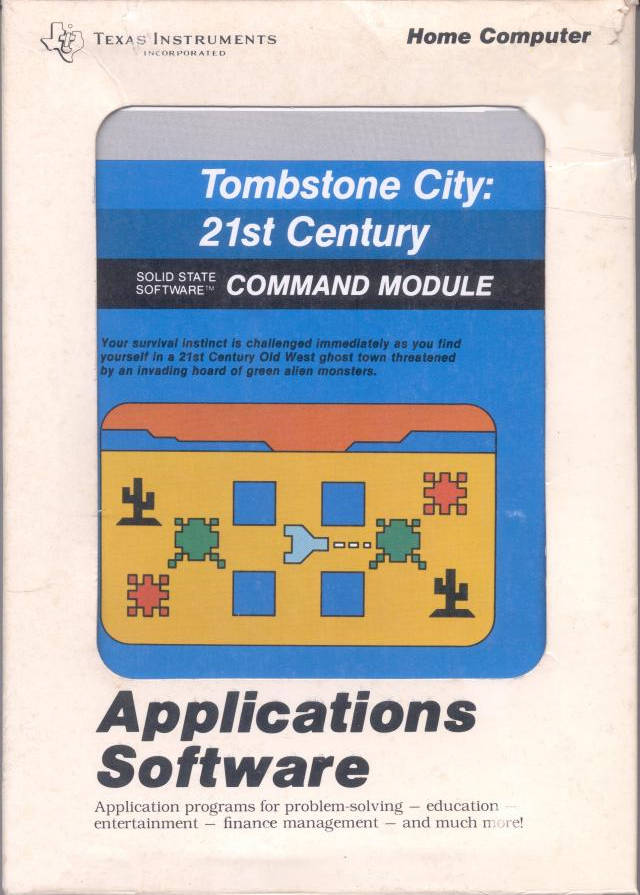
Where do you get game concepts like this? It’s so crazy!
Tombstone City – The last of these top-down grid-based shooting games, Tombstone City is the most complex one. The titular city is in the center of the screen, and it’s a safe zone. It’s a small grid. Around this are hordes of aliens, because despite the wild-west theme, this is a sci-fi game really! Future wild west sci-fi, I guess? Your ship is called a “schooner”, but looks like a generic 2nd-gen space fighter. Heh. So, as in The Attack, the game has basic enemies which can’t hurt you, and a second enemy type which can. These threatening enemies are the same size as the regular ones, though, unlike The Attack’s oversized (4 tile) threat-enemies. They also move quickly, so watch out and try to line up your movements… or die, at higher speeds while playing on keyboard. :p Yeah, this game makes me want a joystick for sure. Threat enemies turn into cactuses when destroyed; the cactuses were originally tombstones, but it was changed for censorship reasons or something like that. Now here’s the trick to the game, which you must understand in order to get anywhere: in order to beat each level, you need to have all cactuses on screen be in a location where there are no other cacti in the eight spaces around them. If two cacti are touching they just sit there, but if three cacti are in contact, the three cacti vanish and a threat enemy spawns and goes after you immediately. There are also quite a few of the normal, non-threatening enemies on screen in each stage, and more may spawn, but threat enemies will mostly spawn only from places where two cacti are touching eachother. So, you’ve got to look for places with two cacti touching, and camp out around there trying to lure an enemy into a position where you can kill them while they’re touching them, to destroy them and spawn another enemy who you hopefully will kill in an open space. Once I got a little better, I started luring them into chains — making a set of three, getting a guy to spawn, and then using that enemy to destroy the next set of cacti. It’s satisfying when you get a bunch separated all at once. It’s an interesting concept, and once you get used to it, it’s fun. It definitely isn’t a simple game, though, unlike most 2nd-gen games, and it starts out slowly as well. Tombstone City speeds up as you go, though. My first impression on this game was ‘argh, I died’, but with a bit of practice, I’m starting to get better. This is a good game for sure.
These last three games I bought locally for $5 each, within a week of getting the system. It was pretty great that a local place had a few of the system’s better games for me to get right after I got the system!
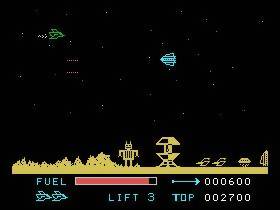
Parsec (Speech Synthesizer supported) – This game is one of the most popular games for the system. It supports the speech synthesizer, too, which is pretty cool; it uses it well. Parsec is a horizontal-scrolling shmup, and enemies come at you a few at a time. Unlike some shmups, your and the enemy’s laser shots are VERY fast — when you fire, an enemy in front of you across the screen will be hit almost instantly, and vice versa. You really need to watch out for their shots because of this! Also, your laser will keep firing if you hold down the fire button, but hold it down too long and you overheat and explode, so don’t do that. The fast enemy shots can be tricky to avoid too. This is an endless game, as games back then usually were. I believe that there are about 16 different types of enemies you have to face before the game loops and starts repeating. The difficulty gradually increases for a long time, though, so only the very best players will be able to play this indefinitely. I can’t get too far, but the great gameplay, decent graphics, and solid design make me want to keep trying. This is a tough but fun game, and I can definitely see why it’s so popular among TI-99/4A fans! The speech definitely adds something to the game too, and the action is fast and fun. It’s mostly playable on keyboard, too, provided that I don’t have to move forwards or back much, but you don’t need to do that often in this game. Still, I’d like to have a joystick for this, I’d probably do better. One issue I do have with the game is the ground — while this game scrolls, there are no actual obstacles to avoid, apart from the ground itself. Unlike, say, Scramble, there are never any barriers above ground level; it’s just the ground, with its endlessly-looping terrain of rocks and buildings, and the starfield above where you ac tually play the game. You can crash into the ground if you fly down to it, but it’s be better if the terrain had more variety, as it does in, say, Scamble or Vanguard. Too bad. The enemies will provide plenty of challenge, though. So far, for me the hardest enemy waves are the ones that come from both the back and the front at once. They’re quite hard to predict. Also, as in some shmups of the era such as Scramble, River Raid, and Zaxxon, the game has a fuel system. You use fuel by flying along, and recharge it in recharging tunnels which appear instead of the usual ground loop when you’re low on fuel. Getting into the tunnels can be tricky, so be very careful. I’ve crashed into the tunnels a few too many times… and they are also narrow, so you have little room to maneuver. Still, it’s a decent mechanic to have, and probably does add to the game. I like the shooting action more, though. The many types of enemies each attack a different way, and this game requires good reflexes. This game is visually simple, but everything from the time is. For a TI 99/4A game, it looks pretty nice. The sprites are small but well-detailed, and each different enemy type looks distinct. Overall, for its time this game looks and plays pretty well, and it’s more fun to play than I was expecting based on videos; this game is fun to play for sure. The speech quotes are also pretty cool. If you get Parsec, definitely also get a speech synthesizer!
Munchman – TI’s take on Pac-Man, Munchman is a blatant clone. The game has a few differences, to try to keep Atari from suing, but it’s Pac-Man alright, and a good variant of it too. This is a good game, one of the more fun ones I have for the system. It controls decently on keyboard, too; you just need to move, no fire button. Instead of eating dots, Munchman (despite the title) actually works more like Crush Roller or Amidar, visually — you’re trying to pass over all of the paths. As you move, a chain-like line is laid down behind you. Once the whole screen has been filled in, it’s off to the next, slightly harder, level. The maze is different from Pac-Man’s maze, it’s important to say, so this game isn’t a clone, it’s a similar game in the same genre. As in Pac-Man, there are four enemies trying to stop you. Unlike Pac-Man, though, each one starts from a different place. Munchman starts in the center of the screen, while the four enemies start in four squares around the center. They leave their little bases a few seconds after you start moving. Amusingly, the power pellets are TI logos. Yeah. One interesting game element that’s different from Pac-Man is that ghosts eaten while you are invincible stay dead until after the invincibility wears off. Each one you ate is sent back to its base, and will only leave it after you’re vulnerable again. So, avoid eating multiple TI powerups at once if you can, because it’ll really cut back on how many ghosts you can eat! In Pac-Man ghosts will respawn right after you eat them, which menas if you then grab another power pellet you’ll now be able to eat those. It’s different in Munchman. I don’t know if this way is better or worse, but it works. The graphics are simple but effective. This is a solid little game. It’s entirely unoriginal, but is a good variation on one of the generation’s greatest classics.
Car Wars – This game is TI’s port of Sega’s arcade game Head-On, released on the Atari 2600 as Dodge ’em (Atari) or Dodger Cars (Sears), and also remade years later on the Game Boy as Head-On (Japan) / Power Racer (US). The game is a maze game, and if it hadn’t released several years before Pac-Man, I’d think that it was a Pac-Man knockoff. Instead, it has to have been one of Pac-Man’s inspirations. The goal of the game is to get all of the dots on the screen. The screen is broken into four ring-shaped paths around a central block. This game is much less dynamic than Pac-Man, though. Unlike that game, you can’t move freely; all you can do is change your speed between slower and faster (hold the button down to go faster) and change lanes at the four intersection areas on the center top, bottom, left, and right of the screen. The enemy car moves as fast as you do, and if they run into it, you lose a life… and the dot field is fully replenished. That’s right, you need to grab every dot without dying in order to clear a level. As a result of this, this game is VERY hard! There’s only one enemy car at the start, or two later on, and you can actually win this game, there are a limited number of screens… but good luck with that. Even beating one screen is tough! The game controls fine on keyboard, but it’s just plain hard whatever the controller. This is a pretty good game, but it’s quite hard. It definitely has that “just one more time” addictive quality to it that a good arcade game should, though. I have the 2600 version and the improved Game Boy version, so I wasn’t sure if this would really be worth it, but the graphics are better on the TI, and the game controls just as well, so it was well worth the low price. Good game! On another note… I would REALLY like to know how this Sega arcade game ended up getting a Game Boy remake from Tecmo. What? It released after the Game Gear was available, too! How odd. Anyway though, Car Wars is a good version of this little-known, but probably influential, arcade classic.
And those are the games and other applications I have so far. The TI 99/4A is decently interesting, but the games are very mixed in quality. I don’t like this system as much as I do the Odyssey 2. Still, it was worth getting and I have a few good games for it.
